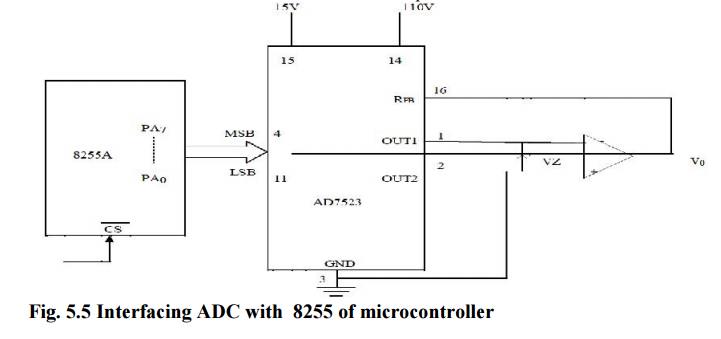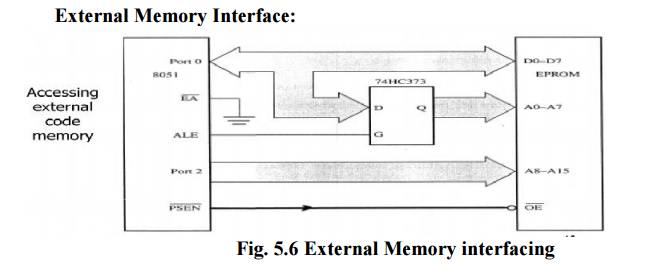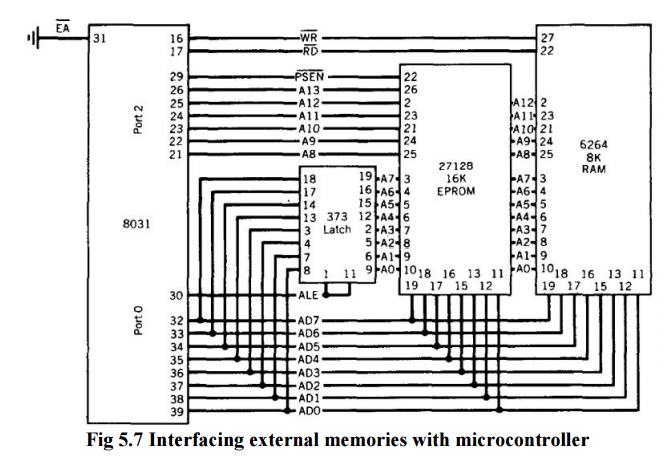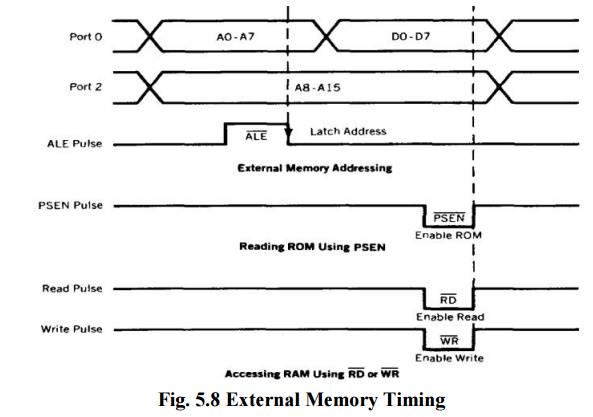Chapter: Microprocessor and Microcontroller : Interfacing Microcontroller
Interfacing Analog to Digital Data Converters
Interfacing Analog to Digital
Data Converters
• In most of the cases, the PPI 8255 is used for
interfacing the analog to digital converters with microprocessor.
• The
analog to digital converters is treaded as an input device by the
microprocessor, that sends an initialising signal to the ADC to start the
analogy to digital data conversation process. The start of conversation signal
is a pulse of a specific duration.
The
process of analog to digital conversion is a slow process, and the
microprocessor has to wait for the digital data till the conversion is over.
After the conversion is over, the ADC sends end of conversion EOC signal to
inform the microprocessor that the conversion is over and the result is ready
at the output buffer of the ADC. These tasks of issuing an SOC pulse to ADC,
reading EOC signal from the ADC and reading the digital output of the ADC
are
carried out by the CPU using 8255 I/O ports.
• The
time taken by the ADC from the active edge of SOC pulse till the active edge of
EOC signal is called as the conversion delay of the ADC.
• It may
range anywhere from a few microseconds in case of fast ADC to even a few
hundred milliseconds in case of slow ADCs.
• The
available ADC in the market use different conversion techniques for conversion
of analog signal to digitals. Successive approximation techniques and dual
slope integration techniques are the most popular techniques used in the
integrated ADC chip.
• General
algorithm for ADC interfacing contains the following steps:
1. Ensure
the stability of analog input, applied to the ADC.
2. Issue
start of conversion pulse to ADC
3. Read end
of conversion signal to mark the end of conversion processes.
4. Read
digital data output of the ADC as equivalent digital output.
5. Analog
input voltage must be constant at the input of the ADC right from the start of
conversion till the end of the conversion to get correct results. This may be
ensured by a sample and hold circuit which samples the analog signal and holds
it constant for a specific time duration. The microprocessor may issue a hold
signal to the sample and hold circuit.
6. If the
applied input changes before the complete conversion process is over, the
digital equivalent of the analog input calculated by the ADC may not be
correct.
ADC 0808/0809:
• The
analog to digital converter chips 0808 and 0809 are 8-bit CMOS,
successive
approximation
converters. This technique is one of the fast techniques for analog to digital
conversion. The conversion delay is 100μs at a clock frequency of 640 KHz,
which is quite
low as
compared to other converters. These converters do not need any external zero or
full scale adjustments as they are already taken care of by internal circuits.

· These converters internally have
a 3:8 analog multiplexer so that at a time eight different analog conversion by
using address lines - ADD A, ADD B, ADD C. Using these address inputs,
multichannel data acquisition system can be designed using a single ADC. The
CPU may drive these lines using output port lines in case of multichannel
applications. In case of single input applications, these may be hardwired to
select the proper input.
• There
are unipolar analog to digital converters, i.e. they are able to convert only
positive analog input voltage to their digital equivalent. These chips do no
contain any internal sample and hold
circuit. If one needs a sample and hold circuit for the conversion of fast signal
into equivalent digital quantities, it has to be externally connected at each
of the analog inputs.
Interfacing Digital to Analog Converters: The
digital to analog converters convert binary
number into their equivalent voltages. The DAC find applications in areas
like digitally controlled gains, motors speed controls, programmable gain
amplifiers etc.
AD 7523
8-bit Multiplying DAC: This is a 16 pin DIP, multiplying digital to analog
converter, containing R- 2R ladder for D-A conversion along with single pole
double thrown NMOS switches to connect the digital inputs to the ladder.




Related Topics